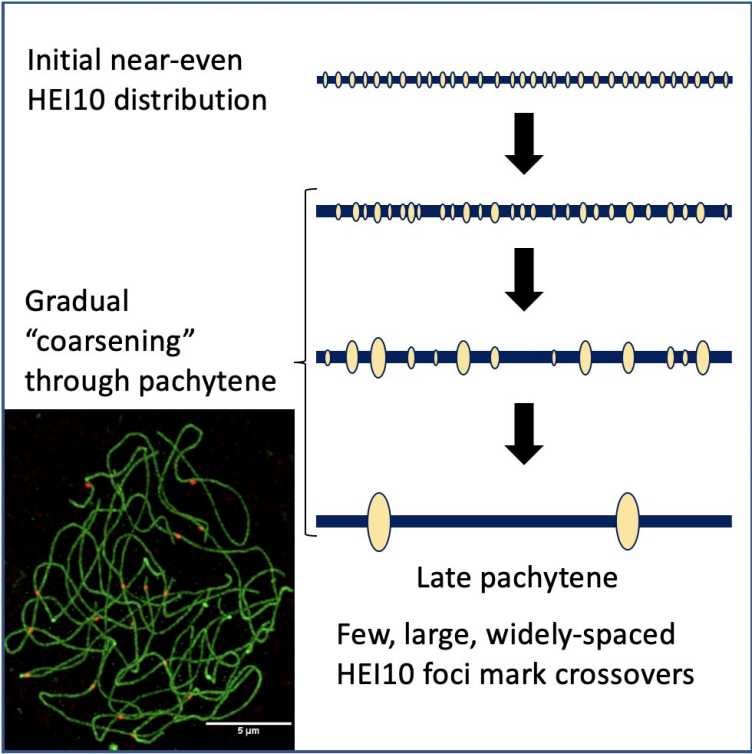A coarsening model for meiotic crossover interference
A study published in Nature Communications, from a collaboration between the Bomblies lab (IMPB) and colleagues at the John Innes Centre and Cambridge University in the UK, presents a new model for how meiotic crossover interference, which is important in chromosome segregation, could work.

Regular chromosome segregation in the specialized cell division that makes eggs and sperm (meiosis) is critically important for fertility and reliable genome maintenance across generations in eukaryotes, including humans, plants, and fungi. Chromosome segregation relies on the formation of DNA recombination events, or crossovers, that are widely spaced through a process called crossover interference. Interference is important because closely spaced crossovers can impair chromosome segregation.
Though interference has been recognized for over 100 years, its mechanism remains hotly debated. A recent collaborative study involving researchers in IMPB and collaborators at the John Innes Center and Cambridge University in the UK, combined super-resolution cytology with computational modeling to generate a new model for how crossover interference might function. The model and cytological data provide complementary data to support the idea that interference may operate at least in part via progressively coarser localization of a recombination protein called HEI10. This operates by the protein being initially quite widely distributed along chromosomes early in meiosis, but progressively coalescing to larger foci at the expense of smaller ones nearby. The end result is that large foci prevent additional ones occurring nearby, and these large foci ultimately mature into recombination events.
Link to the paper in "external page Nature Communications"